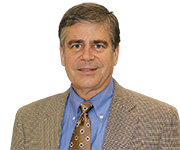What happens to those green spaces?
 I grew up in one of those subdivisions that were built in the 1950s as part of the middle class movement to suburbia. We lived on a dead-end street that abutted what was initially a large farm field that rapidly developed into a city park with slow-pitch baseball fields and makeshift football fields for Pee Wee. Along the southern edge of the park, weeds grew on abandoned farmland. Later I realized that field, with its large milkweed population, was one small reason why we had a large annual monarch butterfly migration through the area.
I grew up in one of those subdivisions that were built in the 1950s as part of the middle class movement to suburbia. We lived on a dead-end street that abutted what was initially a large farm field that rapidly developed into a city park with slow-pitch baseball fields and makeshift football fields for Pee Wee. Along the southern edge of the park, weeds grew on abandoned farmland. Later I realized that field, with its large milkweed population, was one small reason why we had a large annual monarch butterfly migration through the area.
Our moms often kicked us out of the house in the morning and we all headed for the park where we would spend our summer days playing until it was time for dinner. Just like the old “Leave it to Beaver” shows, all the fathers arrived home from work at the same time.
As time progressed the vacant farmland and subsequently the park, were developed for industrial use. The entrance to the park became a 30-foot-high cement wall. The resulting impact was a drab, decaying subdivision that had lost its property value along with its middle-class population.
Natural qualities of an area or locality that make it an attractive place to live and work are called amenities. Natural amenities can include unique natural characteristics of the region to recreational opportunities that make it a destination. Natural aspects usually fall in three categories: 1) mild climate; 2) varying topography (for example, mountains); and 3) proximity to water. Given that many areas in the United States do not contain many of the natural amenities associated with growing populations, golf courses have played an important role in community development and dynamics.
In Ohio we found that golf courses planned and developed by local municipalities in the 1990s could not only increase property tax revenue, but change the population dynamics. Golf courses attracted white-collar workers with higher levels of education.
So it is with mixed emotions that I read about golf courses being closed, abandoned and now being redeveloped for condominiums, rental property and such as the housing market begins to recover. Do I think there are too many golf courses that are too long and difficult, take too long to play and are too costly to play and maintain? Sure I do. Do I think the golf initiatives like Pace of Play and Play Forward as a few examples have come at a good time for the health of golf, especially in light of the courses built in the 1990s? Sure I do, and I’m excited about golf’s future.
Golf courses attract people to live, work and vacation in a community. The impact of a golf course on numerous communities in improving the quality of life, in my opinion, has been astounding. In our study we found that 50 percent of the residents who lived around the golf courses didn’t even play golf. These people bought their homes on the golf course for the aesthetic value and the feeling of being closer to nature.
It is with that in mind that I wonder what impact golf courses that are slated to be redeveloped for housing have on homeowners and the surrounding community. Will there be enough surrounding green space and activities to retain people? Or will these communities mimic strip malls that eventually lose customers and businesses only to be abandoned and replaced by a new strip mall down the road?
The fate of golf courses may follow market forces, but the impact will be felt socially and environmentally, beyond just playing golf. Communities face challenges in what to do with these new green spaces and whether they need to be protected, converted into multifunctional uses or developed. What these communities decide will determine to a large extent how the community is perceived by potential homeowners and to some extent, the value of golf.
Karl Danneberger, Ph.D., Golfdom‘s science editor and a professor at The Ohio State University, can be reached at danneberger.1@osu.edu.








